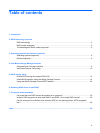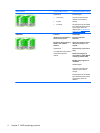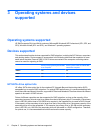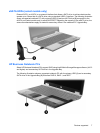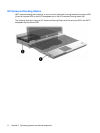The advantages of RAID modes supported
Fault tolerance and performance are important terms to understand when choosing a RAID mode.
Fault tolerance
Fault tolerance is the ability of a RAID array to withstand and recover from a drive failure. Fault tolerance
is provided by redundancy. Therefore, RAID 0 has no fault tolerance because it does not copy data to
another HDD. With RAID 1 and IRRT, one drive can fail without causing the array to fail. With IRRT,
however, recovery of a single file or an entire HDD is much simpler than using RAID 1 alone.
Performance
Performance is easy to understand, but it is difficult to measure because it involves several factors,
some of which are beyond the scope of this document. Overall storage performance is determined by
write performance and read performance, both of which vary based on the RAID technology selected.
●
RAID 0 (striping) improves overall storage performance because data can be written and read
simultaneously across two HDDs.
●
IRRT and RAID 1 (mirroring) writes the same data to both HDDs; therefore, write performance may
be slower. However, data can be read from both HDDs, so the read performance can be higher
than that of a single non-RAID HDD.
The advantages of RAID modes supported 5





